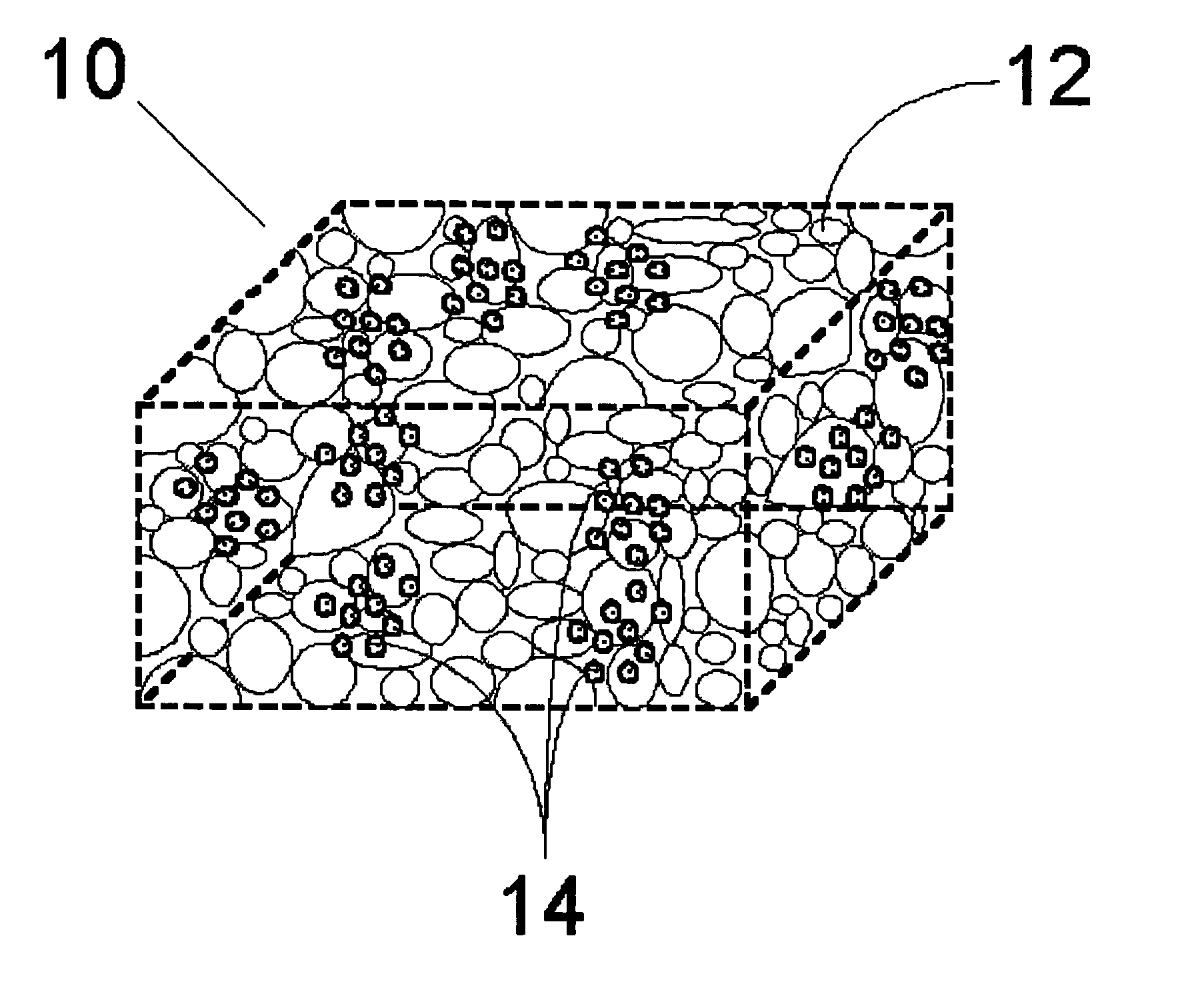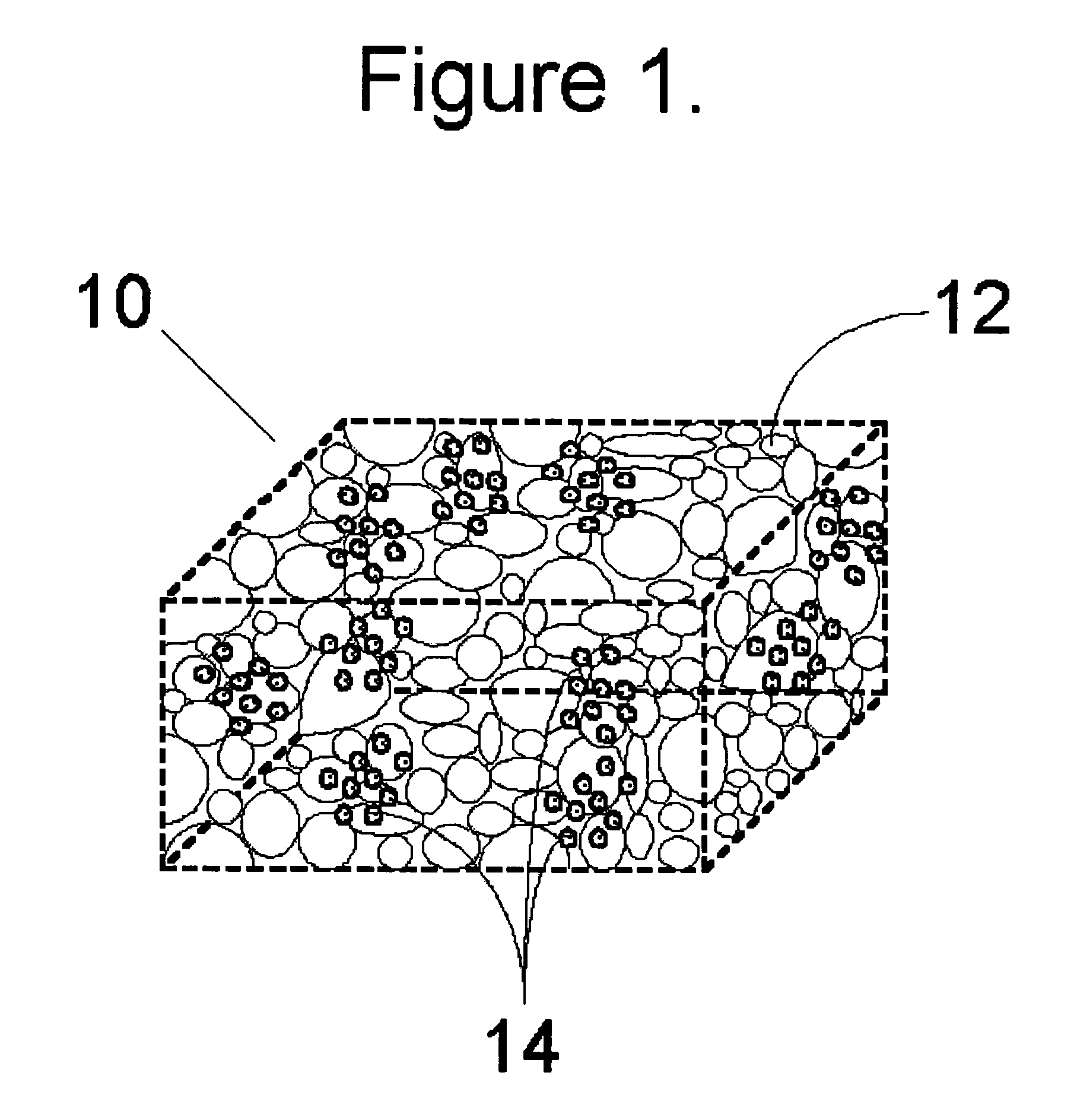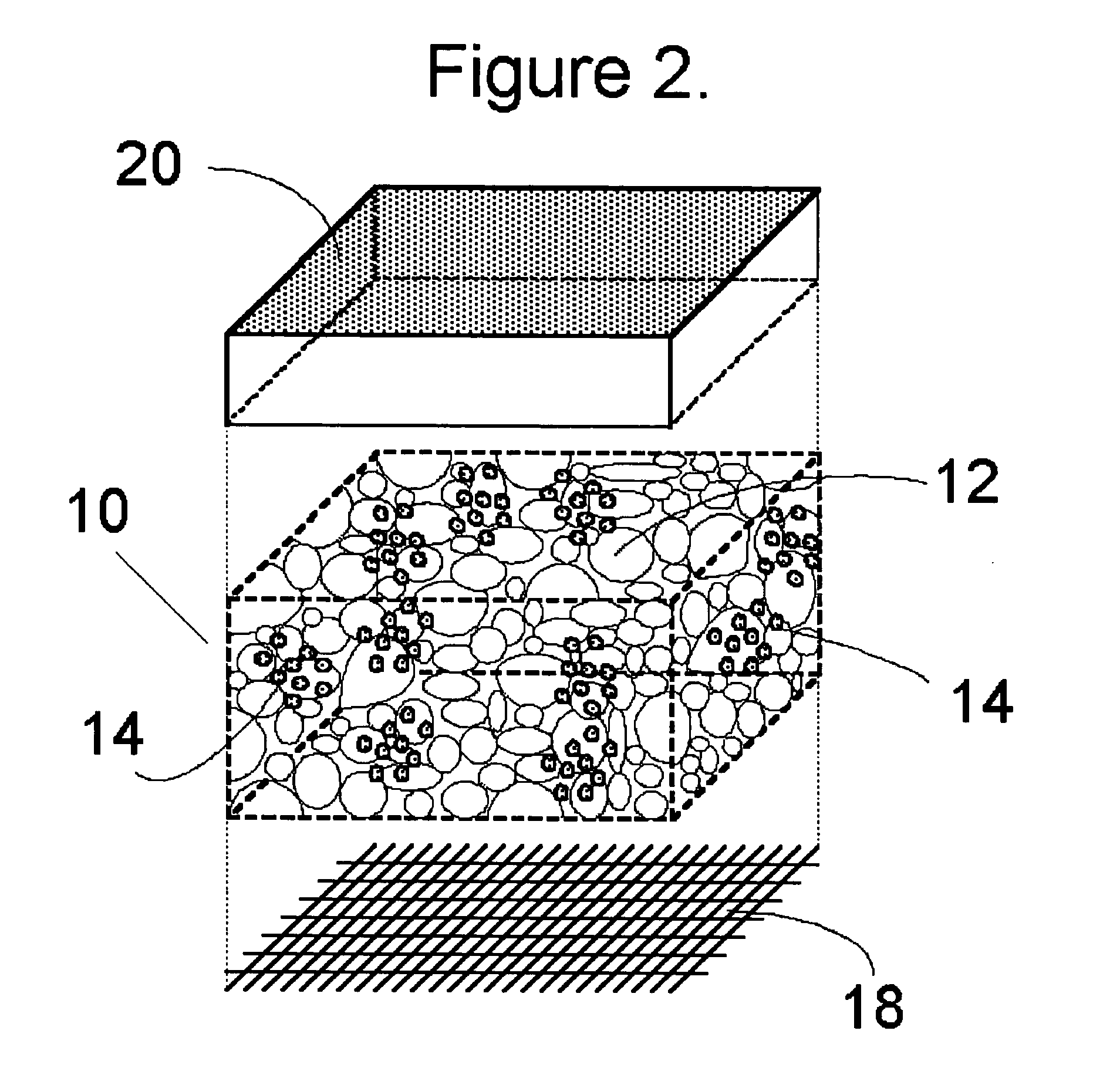Air filter for removing particulate matter and volatile organic compounds
a technology of air filter and volatile organic compound, applied in the field of air filter, to achieve the effect of effective voc removal and maximize the likelihood of vocs coming into conta
- Summary
- Abstract
- Description
- Claims
- Application Information
AI Technical Summary
Benefits of technology
Problems solved by technology
Method used
Image
Examples
example 1
[0032] Filter test specimens were prepared in the following manner. First, a tacky polymer gel was synthesized by combining the following components in weight ratios of 1.17 g polyacrylamide (Polyscience); 1.30 g polyacrylamide-co-diallyldimethylammonium chloride; 5.20 g sorbitol; 10.53 g deionized Water; 6.50 g glycerol and then diluting the resulting composition to 1:2 using an additional 26.00 g deionized water. The solution resulting was covered and slowly stirred overnight at ambient temperature (for about 12 hours). Next, 2.5 grams of a sequesterant, was added and allowed to become homogeneously suspended by mechanical stirring. Sequesterants preferred here were DOWEX® OPTIPORE® V493 and V503 (polymeric adsorbents available from Dow Chemicals, Inc.; the properties of V493 include: particle size range 20-50 Mesh, BET specific (square meter / gram) surface 1100, porosity 1.16 cubic cm per gram, average pore diameter 46 angstrom, and density 0.34 gram / cubic cm; the properties of V5...
example 2
[0036] A second filter test specimen was prepared in precisely the same manner as in Example 1, with one difference. The amount nonionic surfactant, ZONYL® FSH, was varied from Example 1. In this case, 10 drops were added to the tacky polymer gel composition and stirred briefly prior to application. The same sandwich structure of coated substrate was assembled for testing purposes.
[0037] The test conditions were: air flow rate=110 cubic feet per minute at 23° C. and 50% relative humidity. The initial flow resistance of the Example 2 filter was 0.13 inches of water (gauge).
TABLE 2aAmbient Atmospheric Particles SizeExample 2. Removal EfficiencyRange (micrometers)(percent)0.7-1.00.01.0-1.39.661.3-1.69.921.6-2.228.622.2-3.048.203.0-4.061.594.0-5.564.065.5-7.085.94 7.0-10.070.59
[0038]
TABLE 2bTobacco Smoke Particles SizeExample 2. Removal EfficiencyRange (micrometers)(percent)0.7-1.00.01.0-1.30.01.3-1.614.341.6-2.239.122.2-3.079.433.0-4.077.324.0-5.592.515.5-7.097.80 7.0-10.099.31
example 3
[0039] A third filter test specimen was prepared in precisely the same manner as in Example 1, with one difference. The amount nonionic surfactant, ZONYL® FSH, was varied from Example 1. In this case, 5 drops were added to the tacky polymer gel composition and stirred briefly prior to application. The same sandwich structure of coated substrate was assembled for testing purposes.
[0040] The test conditions were: air flow rate=110 cubic feet per minute at 23° C. and 50% relative humidity. The initial flow resistance of the Example 3 filter was 0.045 inches of water (gauge).
TABLE 3aAmbient Atmospheric Particles SizeExample 3. Removal EfficiencyRange (micrometers)(percent)0.7-1.00.01.0-1.310.511.3-1.614.641.6-2.215.212.2-3.024.223.0-4.037.784.0-5.554.385.5-7.069.95 7.0-10.051.28
[0041]
TABLE 3bTobacco Smoke Particles SizeExample 3. Removal EfficiencyRange (micrometers)(percent)0.7-1.00.01.0-1.30.01.3-1.610.081.6-2.216.732.2-3.045.483.0-4.039.784.0-5.559.035.5-7.063.93 7.0-10.041.03
PUM
 Login to View More
Login to View More Abstract
Description
Claims
Application Information
 Login to View More
Login to View More - R&D
- Intellectual Property
- Life Sciences
- Materials
- Tech Scout
- Unparalleled Data Quality
- Higher Quality Content
- 60% Fewer Hallucinations
Browse by: Latest US Patents, China's latest patents, Technical Efficacy Thesaurus, Application Domain, Technology Topic, Popular Technical Reports.
© 2025 PatSnap. All rights reserved.Legal|Privacy policy|Modern Slavery Act Transparency Statement|Sitemap|About US| Contact US: help@patsnap.com



